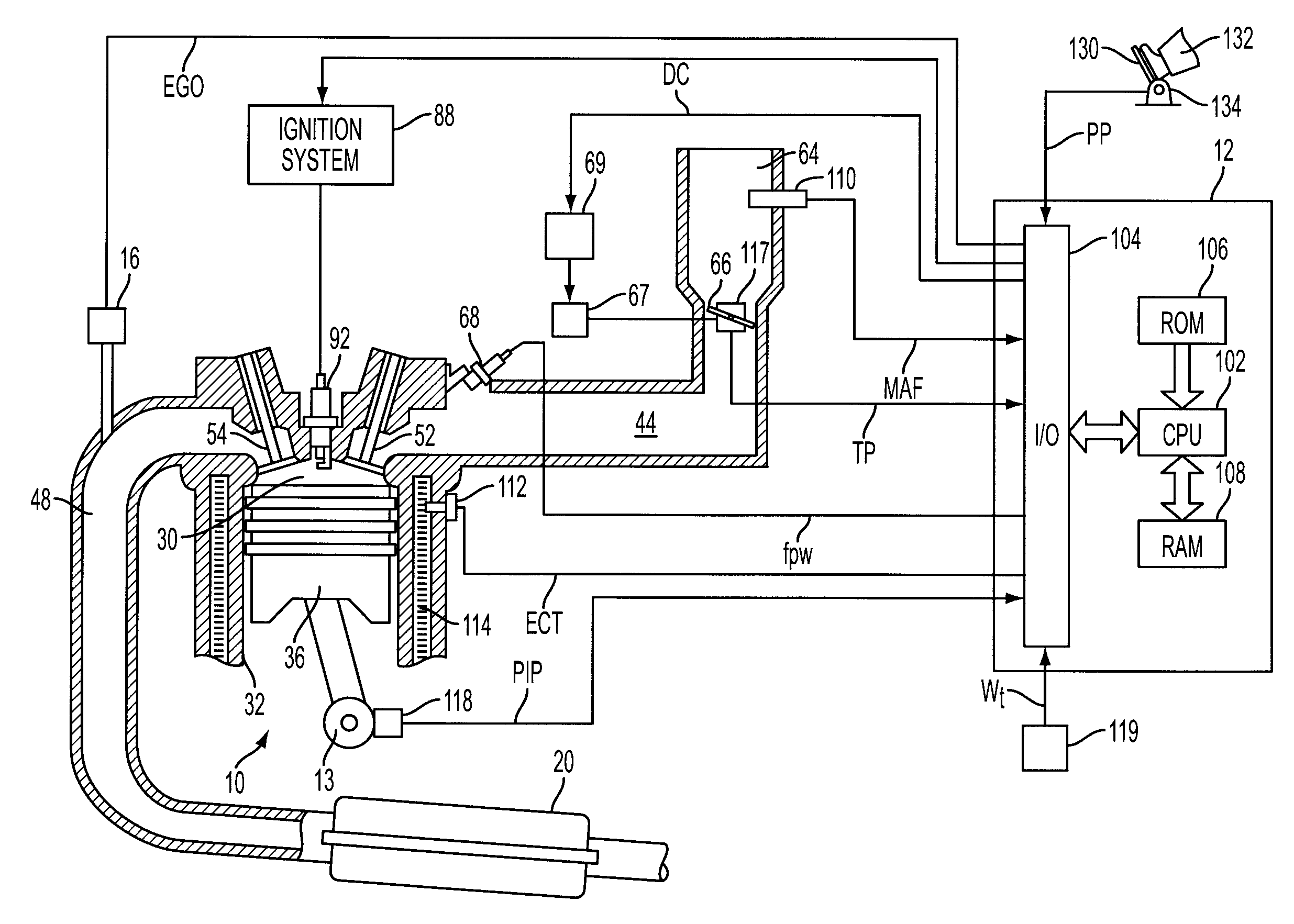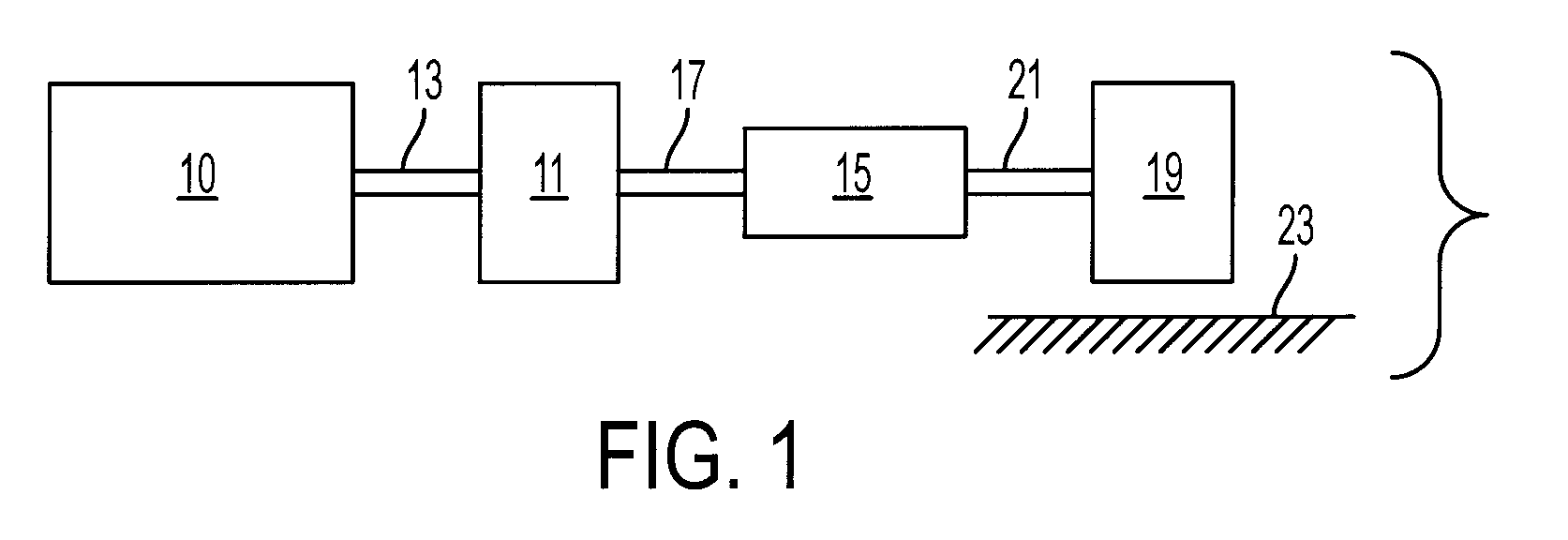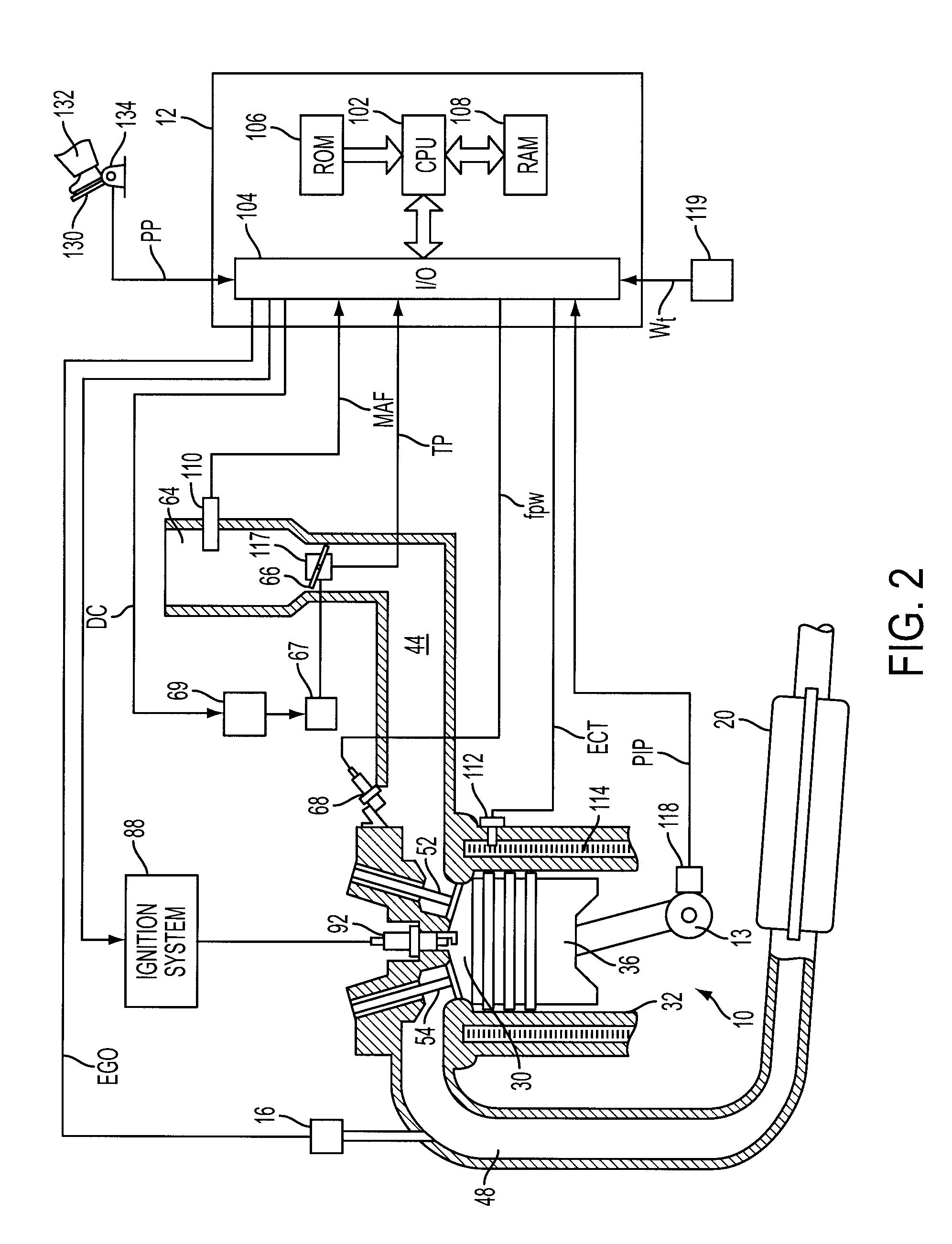System and method for improved vehicle response during vehicle acceleration conditions
a technology for acceleration conditions and vehicles, applied in the field of engine and vehicle control, can solve the problems of poor driveability, poor driveability, poor driveability, poor customer satisfaction, etc., and achieve the effects of improving driveability, reducing clunk, and increasing response delay
- Summary
- Abstract
- Description
- Claims
- Application Information
AI Technical Summary
Benefits of technology
Problems solved by technology
Method used
Image
Examples
Embodiment Construction
[0016]Referring to FIG. 1, internal combustion engine 10, further described herein with particular reference to FIG. 2, is shown coupled to torque converter 11 via crankshaft 13. Torque converter 11 is also coupled to transmission 15 via turbine shaft 17. Torque converter 11 has a bypass clutch (not shown) which can be engaged, disengaged, or partially engaged. When the clutch is either disengaged or being disengaged, the torque converter is said to be in an unlocked state. Turbine shaft 17 is also known as transmission input shaft. In one embodiment, transmission 15 comprises an electronically controlled transmission with a plurality of selectable discrete gear ratios. Transmission 15 may also comprises various other gears, such as, for example, a final drive ratio (not shown). Alternatively, transmission 15 may be a continuously variable transmission (CVT).
[0017]Transmission 15 may further be coupled to tire 19 via axle 21. Tire 19 interfaces the vehicle (not shown) to the road 23...
PUM
 Login to View More
Login to View More Abstract
Description
Claims
Application Information
 Login to View More
Login to View More - R&D
- Intellectual Property
- Life Sciences
- Materials
- Tech Scout
- Unparalleled Data Quality
- Higher Quality Content
- 60% Fewer Hallucinations
Browse by: Latest US Patents, China's latest patents, Technical Efficacy Thesaurus, Application Domain, Technology Topic, Popular Technical Reports.
© 2025 PatSnap. All rights reserved.Legal|Privacy policy|Modern Slavery Act Transparency Statement|Sitemap|About US| Contact US: help@patsnap.com



